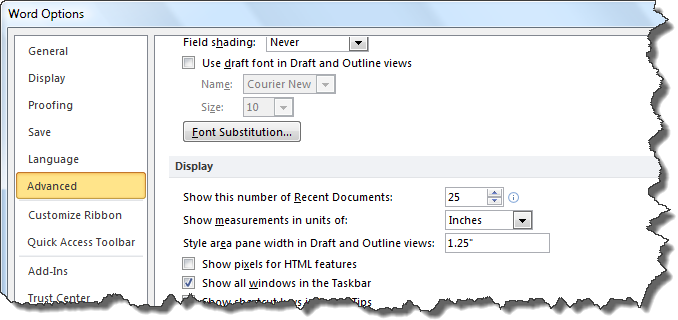

If the part at the bottom of the page continues onto the next page, you'll need another section break and a full-page. Click in the line with the single word Cras. The paragraph should now have the same font as the other paragraphs. Click in the Styles pane on the Normal style.

Place the cursor in the paragraph starting with Cras id tellus velit. Fill each rectangle with the desired color for that part of the page. Apply styles Microsoft Word 2010 To see all styles, click A pane called Styles will appear.

However, you can apply your own table shading without using table styles. Then insert two rectangles anchored in the header, one sized and positioned to cover the top half of the page and the other to cover the bottom half. The shading described above is applied using ready made table styles. Make sure the other selections are correct (the default settings are usually appropriate) and then click OK. Name the style and ensure that Style type is set to "table". For instance, I have a flag in the background and want to put the name of my event on top of it. When I select 'no fill' for my text box, the space behind the type is all white, so I cant layer my text box on top of clip art that I want to use as a background. Table Tools > Design > Table Styles > More Button > New Table Style, and the Create New Style from Formatting window will open. Text has a white background even though my text box has 'no fill' selected. You can even format your table the way you want it to appear and then save it as a new table style. These table styles offer combinations of borders and shading, some emphasizing header rows and some alternating row colours. The following panel appears, displaying thumbnail images of the table styles available for us to choose. (bottom right of the Table Styles group). To apply a table style, place the cursor in any cell of your table and then click Table Tools > Design > Table Styles > More Button Live Previews let you see what those styles look like without Word provide a rich selection of different styles you can apply to your tables. For the purpose of displaying a rectangle anchored in the header, the answer is "they might as well not exist there because you can't see the rectangle".Microsoft Word 2010 removes much of the need to spend time getting the shading right on tables in your documents. To answer your question about "no header or footer in the middle of a page", if you insert a Continuous section break in the middle of the page, the second section's header and footer do exist (in the software) but they're hidden the header and footer thatĪppear on the page are both from the earlier section. The section break forces another new page, and you're left with a mostly-blank page. That means you shouldn't insert the section breaks until the document is complete and won't be edited any more - or else you might find that a section pushes one or more lines to a new page, then The drawback is that text can't flow across section breaks. If the part at the bottom of the page continues onto the next page, you'll need another section break and a full-page rectangle in that section's header, again unlinked from previous. Fill each rectangle with the desired color for that part of the page. Positioned to cover the top half of the page and the other to cover the bottom half. Then insert two rectangles anchored in the header, one sized and Alice, you would have to separate that page from the preceding one with a section break (probably a Next Page break is simplest) and turn off the Link to Previous in the new page's header.


 0 kommentar(er)
0 kommentar(er)
